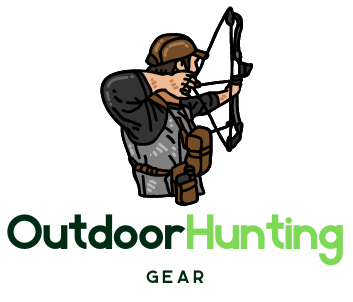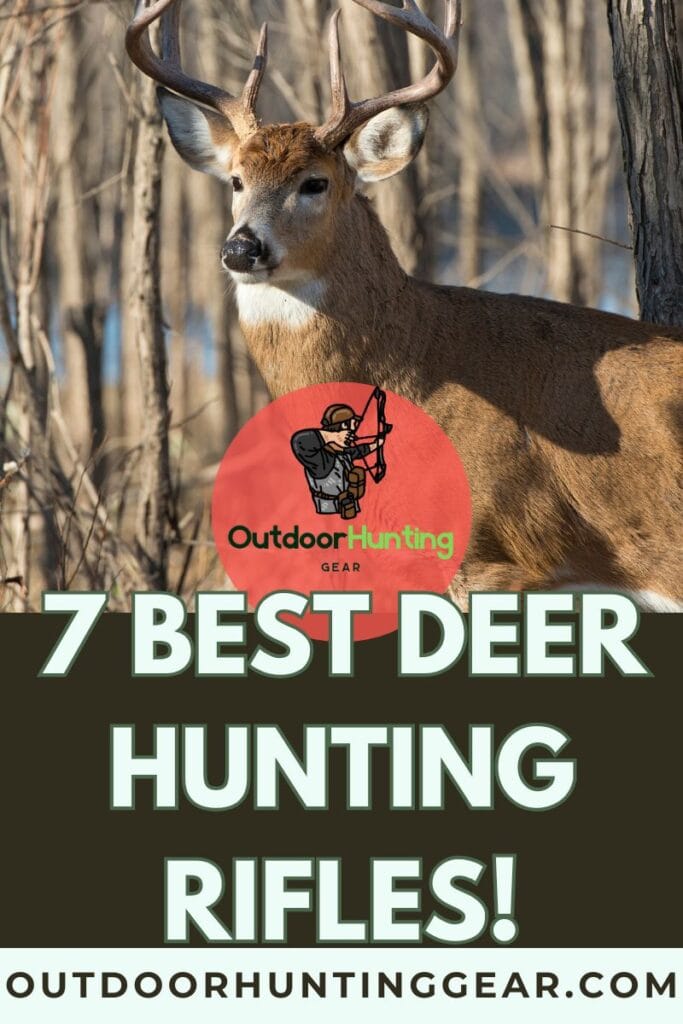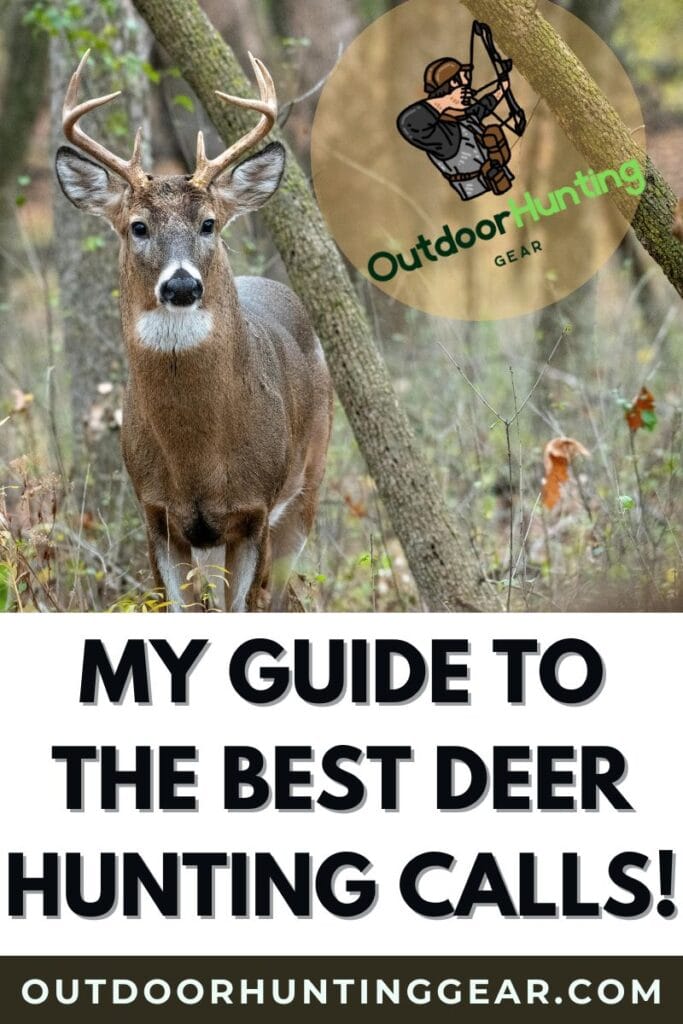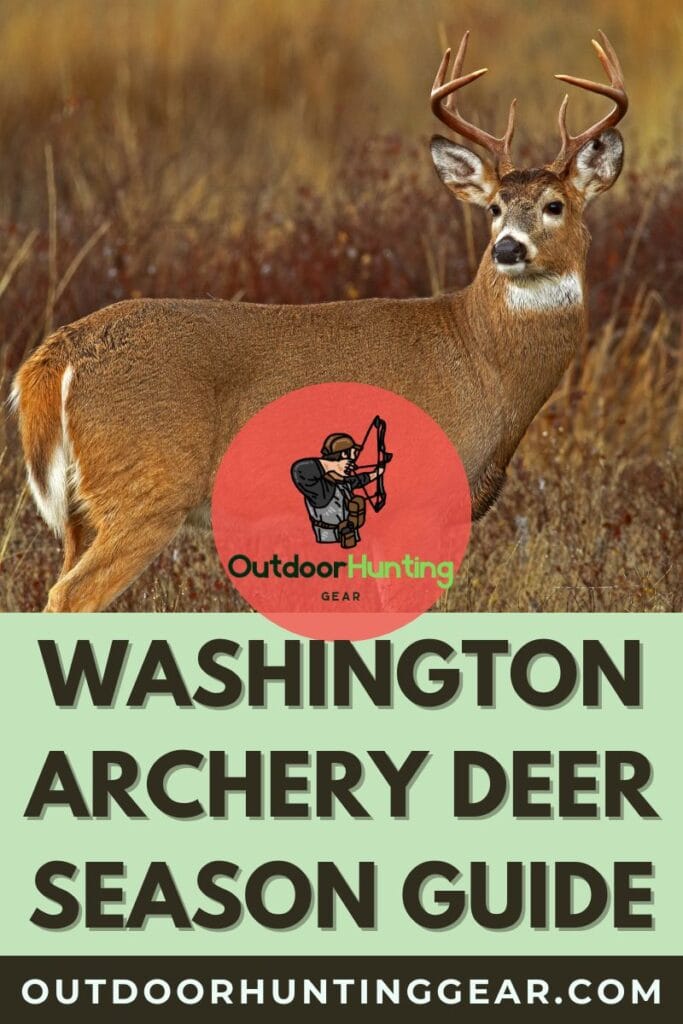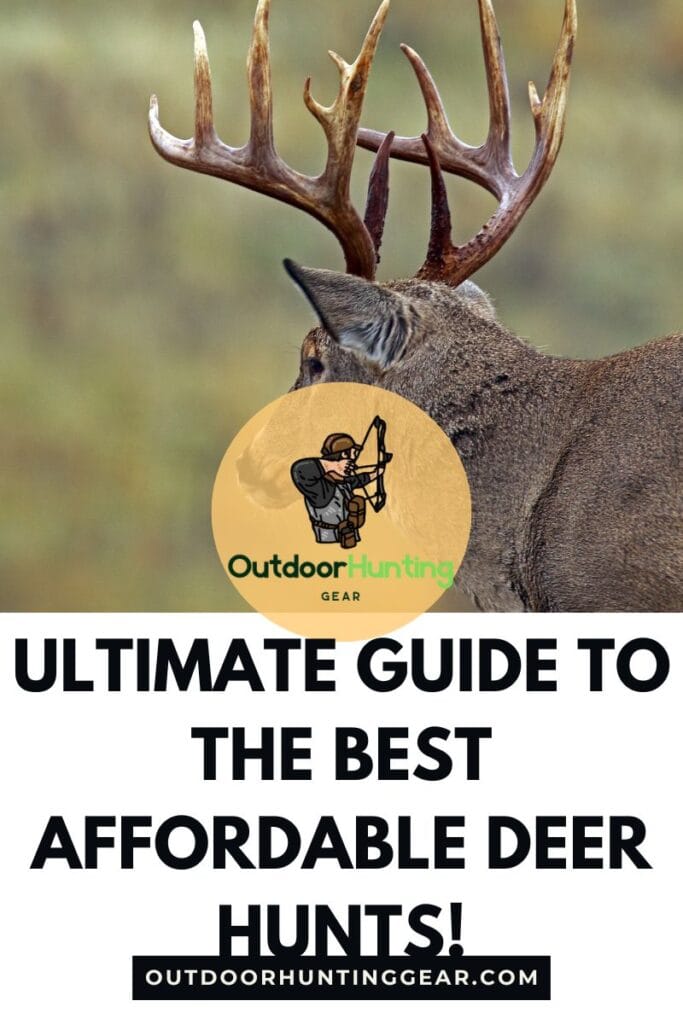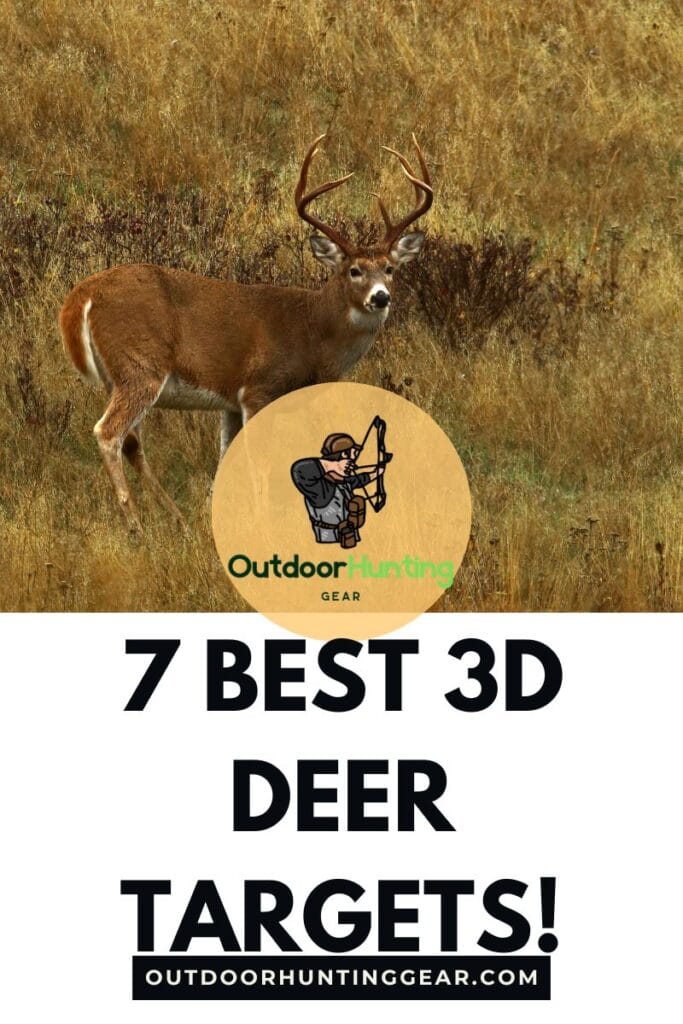Find the best rangefinder for bow hunting with our expert review. Discover the top 3 laser rangefinder models that combine advanced features, durability, and user-friendly design.
When it comes to bow hunting, precision is everything. The exciting thrill of lining up that perfect shot can quickly turn into frustration if your aim is off by even a few inches.
This is where a quality rangefinder becomes an indispensable tool. Designed to give you the exact distance between you and your target, a rangefinder takes the guesswork out of the equation, ensuring your shot is as accurate as possible on your next bow hunt.
In this article, we’ll explore the best rangefinder for bow hunting and give you our top 3 rangefinders for bow hunters picks that are currently dominating the market. Whether you’re a seasoned bow hunter or just starting out, these rangefinders will give you the edge you need to hit your target every time.
- Best Rangefinder for Bow Hunting Compared
- Best Bow Hunting Rangefinder Reviewed: Top 3 Rangefinder Models for Precision and Reliability
- How to Choose the Best Rangefinder for Bow Hunting
- Best Rangefinder for Bow Hunting: Conclusion
- Best Rangefinder for Bow Hunting – Frequently Asked Questions (FAQ)
- What is the importance of using a rangefinder for bow hunting?
- How does angle compensation work in a rangefinder?
- What range should I look for in a bow hunting rangefinder?
- Are all rangefinders waterproof?
- How do I maintain and care for my rangefinder?
- Can I use a bow hunting rangefinder for rifle hunting?
- How important is the size and weight of a rangefinder?
- What should I consider when choosing between different rangefinder brands?
- Do rangefinders require batteries, and how long do they last?
- Can I use a rangefinder in low-light conditions?
Best Rangefinder for Bow Hunting Compared
| Feature/Specification | Vortex Optics Impact 1000 Rangefinder Learn More → Visit Store → | Nikon Arrow ID 7000 VR Rangefinder Learn More → Visit Store → | Bushnell Prime 1700 Hunting Laser Rangefinder Learn More → Visit Store → |
|---|---|---|---|
| Maximum Range | 1000 yards | 1000 yards | 1700 yards |
| Angle Compensation | Horizontal Component Distance (HCD) | Incline/Decline (ID) Technology | Angle Range Compensation (ARC) |
| Display Quality | Clear, easy-to-read in low light | Bright, multi-layer coated lenses | Fast focus eyepiece |
| Vibration Reduction | No | Yes | No |
| Waterproof/Weatherproof | Yes, waterproof and shockproof | Yes, waterproof | Yes, with EXO Barrier Protection |
| Weight | Lightweight | Ergonomic and slightly heavier | Lightweight |
| Ease of Use | Simple, intuitive controls | Advanced but user-friendly | One-button operation |
| Durability | High, built for rugged use | High, rubber armor coating | High, rugged construction |
| Price Range | Mid-range Check price → | Higher-end Check price → | Mid-range Check price → |
| Best for | Beginners and all-around use | Precision and advanced tech users | Affordable performance |
| Warranty | Vortex VIP Lifetime Warranty | Nikon Limited Lifetime Warranty | Bushnell Limited Lifetime Warranty |
| Where is it sold? | Buy on Amazon → | Buy on Amazon → | Buy on Amazon → |
This table provides a quick overview to help you compare the key features of each rangefinder and decide which one best suits your needs for bow hunting.
Best Bow Hunting Rangefinder Reviewed: Top 3 Rangefinder Models for Precision and Reliability
Choosing the right rangefinder can transform your bow hunting success. Our expert review of the top 3 rangefinders covers everything from accuracy to durability, providing you with the insights you need to select the best tool for your hunting needs. Read on to find your ideal rangefinder.
1. Vortex Optics Impact 1000 Yard Laser Rangefinder
Why It’s Great for Bow Hunting:
The Vortex Optics Impact 1000 Laser Rangefinder (view) is a top-tier rangefinder that combines reliability, durability, and advanced technology.
It offers a range of up to 1000 yards, which is more than enough for bow hunting scenarios. The device is incredibly compact and lightweight, making it easy to carry in the field.
Key Features:
- Angle Compensation: The rangefinder’s Horizontal Component Distance (HCD) mode compensates for the angle of your shot, ensuring you get the most accurate distance measurement.
- Clear Display: The display is crisp and easy to read, even in low-light conditions, which is crucial during early morning or late evening hunts.
- Waterproof and Shockproof: Built to withstand the elements, the Vortex Optics Impact 1000 Laser Rangefinder (view) is both waterproof and shockproof, making it ideal for rugged outdoor use.
Why It Stands Out:
What sets this rangefinder apart is its ease of use. With a simple menu and intuitive controls, it’s a great choice for both beginners and experienced hunters.
The Vortex Optics VIP Warranty is another huge plus, offering a lifetime guarantee with no paperwork needed.
2. Nikon Arrow ID 7000 VR Bowhunting Laser Rangefinder
Why It’s Great for Bow Hunting:
The Nikon Arrow ID 7000 VR Rangefinder (view) is designed specifically with bow hunters in mind.
It features Nikon’s advanced VR (Vibration Reduction) technology, which reduces vibrations caused by hand movement, providing a more stable image and precise reading.
Key Features:
- VR Technology: The vibration reduction is a game-changer, especially when you’re trying to get a clear reading in less-than-ideal conditions.
- ID (Incline/Decline) Technology: This feature provides the horizontal distance to your target, even when you’re shooting from an incline or decline, ensuring you don’t misjudge your shot.
- Multi-Layer Coatings: The lenses are coated with multiple layers to enhance light transmission and clarity, giving you a bright and clear view of your target.
Why It Stands Out:
The Nikon Arrow ID 7000 VR Rangefinder (view) is all about precision. Its 8-second continuous measurement allows you to track a moving target with ease, making it ideal for bow hunters who need to react quickly.
The ergonomic design and rubber armor coating provide a comfortable, non-slip grip, even in wet conditions.
3. Bushnell Prime 1700 Hunting Laser Rangefinder 6x24mm – Slope Adjustment, Archery, Rifle Modes, Brush & Bullseye Modes, Crisp Clear
Why It’s Great for Bow Hunting:
The Bushnell Prime 1700 Hunting Laser Rangefinder (view) is another excellent option for bow hunters, offering high performance at an affordable price.
It has a maximum range of 1700 yards, though it excels in the shorter ranges typical of bow hunting.
Key Features:
- ARC (Angle Range Compensation) Mode: This mode ensures accurate readings whether you’re on flat terrain or shooting from an elevated position.
- EXO Barrier Protection: The lenses are treated with Bushnell’s EXO Barrier, which repels water, oil, dust, and debris, ensuring a clear view in all conditions.
- Fast Focus System: The fast focus eyepiece allows you to quickly and easily adjust the focus to your eye, ensuring a sharp image of your target.
Why It Stands Out:
The Bushnell Prime 1700 Laser Rangefinder (view) is praised for its speed and accuracy.
The rangefinder’s Brush and Bullseye modes allow you to prioritize objects in the foreground or background, which is particularly useful when your target is partially obscured by foliage.
Its rugged construction and simple, one-button operation make it a reliable companion for any bow hunter.
How to Choose the Best Rangefinder for Bow Hunting
When selecting a rangefinder for bow hunting, there are several factors you should consider to ensure you make the right choice.
Range and Accuracy
While the maximum range of a rangefinder is an important consideration, it’s equally crucial to focus on accuracy within the typical bow hunting range of 20 to 60 yards.
All three of the rangefinders listed above excel in this regard, providing precise readings that will help you line up the perfect shot.
Angle Compensation
Angle compensation is a must-have feature for bow hunters. Since you’ll often be shooting from an elevated position, such as a tree stand, the angle of your shot can significantly impact the actual distance to your target.
Look for rangefinders with Angle Range Compensation (ARC) or similar technologies to ensure you get the most accurate distance readings.
Durability and Weather Resistance
Hunting conditions can be unpredictable, so your rangefinder needs to be tough enough to handle the elements.
All three of the rangefinders we’ve highlighted are waterproof and built to withstand rough conditions, ensuring they’ll be a reliable tool in your hunting arsenal for years to come.
Size and Weight
When you’re out in the field, you’ll want a rangefinder that is compact and lightweight, so it’s easy to carry and won’t weigh you down.
The Vortex Optics Impact 1000 Laser Rangefinder (view), Nikon Arrow ID 7000 VR Laser Rangefinder (view), and Bushnell Prime 1700 Laser Rangefinder (view) are all designed with portability in mind, making them great choices for bow hunters on the move.
Ease of Use
Simplicity is key when you’re in the moment and need a quick distance reading. The rangefinders on this list all feature user-friendly interfaces, with clear displays and straightforward controls that make them easy to operate, even in high-pressure situations.
Best Rangefinder for Bow Hunting: Conclusion
Picking the best rangefinder can make all the difference in your bow hunting success.
The Vortex Optics Impact 1000 Rangefinder (view), Nikon Arrow ID 7000 VR Rangefinder (view), and Bushnell Prime 1700 Rangefinder (view) are all exceptional options, each offering unique features that cater to different needs and preferences.
Whether you prioritize ease of use, advanced technology, or rugged durability, one of these rangefinders is sure to meet your requirements.
Remember, the key to successful bowhunting is precision, and with the right rangefinder in your gear, you’ll have the confidence to make every shot count.
Best Rangefinder for Bow Hunting – Frequently Asked Questions (FAQ)
What is the importance of using a rangefinder for bow hunting?
Using a rangefinder for bow hunting is crucial because it helps you accurately measure the distance between you and your target. This ensures that you can make precise shots, reducing the chances of missing or wounding your target.
Rangefinders also account for factors like angle, which can significantly affect shot accuracy, especially when hunting from an elevated position.
How does angle compensation work in a rangefinder?
Angle compensation, often referred to as Angle Range Compensation (ARC), adjusts the distance reading to account for the angle at which you are shooting. For example, if you are in a tree stand and aiming downward, the angle can make the actual horizontal distance to the target different from the line-of-sight distance.
Angle compensation ensures that you get an accurate measurement, so your shot is more likely to be on target.
What range should I look for in a bow hunting rangefinder?
While many rangefinders boast maximum ranges of 1000 yards or more, for bow hunting, the most critical range is between 20 and 60 yards.
All three rangefinders mentioned—Vortex Optics Impact 1000 Laser Rangefinder (view), Nikon Arrow ID 7000 VR Laser Rangefinder (view), and Bushnell Prime 1700 Laser Rangefinder (view)—excel within this range, providing precise readings that will help you make accurate shots.
Are all rangefinders waterproof?
Not all rangefinders are waterproof, but the ones recommended in this article—Vortex Optics Impact 1000 Laser Rangefinder (view), Nikon Arrow ID 7000 VR Laser Rangefinder (view), and Bushnell Prime 1700 Laser Rangefinder (view)—are built to be waterproof and durable, making them suitable for use in various weather conditions.
How do I maintain and care for my rangefinder?
To maintain your rangefinder, keep it clean and dry when not in use. Wipe down the lenses with a soft, dry cloth after each use to remove dirt and moisture. Store it in a protective case to prevent damage during transport. If your rangefinder is waterproof, make sure to rinse it off with fresh water after exposure to saltwater or heavy dirt, and always allow it to dry thoroughly before storing.
Can I use a bow hunting rangefinder for rifle hunting?
Yes, you can use a bow hunting rangefinder for rifle hunting, but keep in mind that bow hunting rangefinders typically have shorter maximum ranges. If you primarily hunt with a rifle, you might prefer a rangefinder with a longer range capability, but many hunters successfully use dual-purpose rangefinders for both activities.
How important is the size and weight of a rangefinder?
The size and weight of a rangefinder are essential factors, especially for bow hunters who often carry their equipment for long periods. A compact and lightweight rangefinder is easier to carry and handle in the field, reducing fatigue and making it more convenient to use when you need a quick distance reading.
What should I consider when choosing between different rangefinder brands?
When choosing a rangefinder, consider factors like range capability, angle compensation, durability, ease of use, and warranty. Different brands offer various features, so think about what matters most to you—whether it’s advanced technology like vibration reduction, ruggedness, or simplicity.
Do rangefinders require batteries, and how long do they last?
Yes, rangefinders typically require batteries, usually CR2 or similar. The battery life can vary depending on usage and features like continuous measurement mode. It’s a good idea to carry a spare battery with you in the field to avoid running out of power at a critical moment.
Can I use a rangefinder in low-light conditions?
Yes, many rangefinders, including the ones mentioned in this article, are designed to work well in low-light conditions. They often feature clear, illuminated displays that make it easy to read the distance measurements even during early morning or late evening hunts.
Thanks for reading!
I wish you the best of luck and success on your next hunting adventure. Make it a memorable one!
Sincerely,
~ Mike

